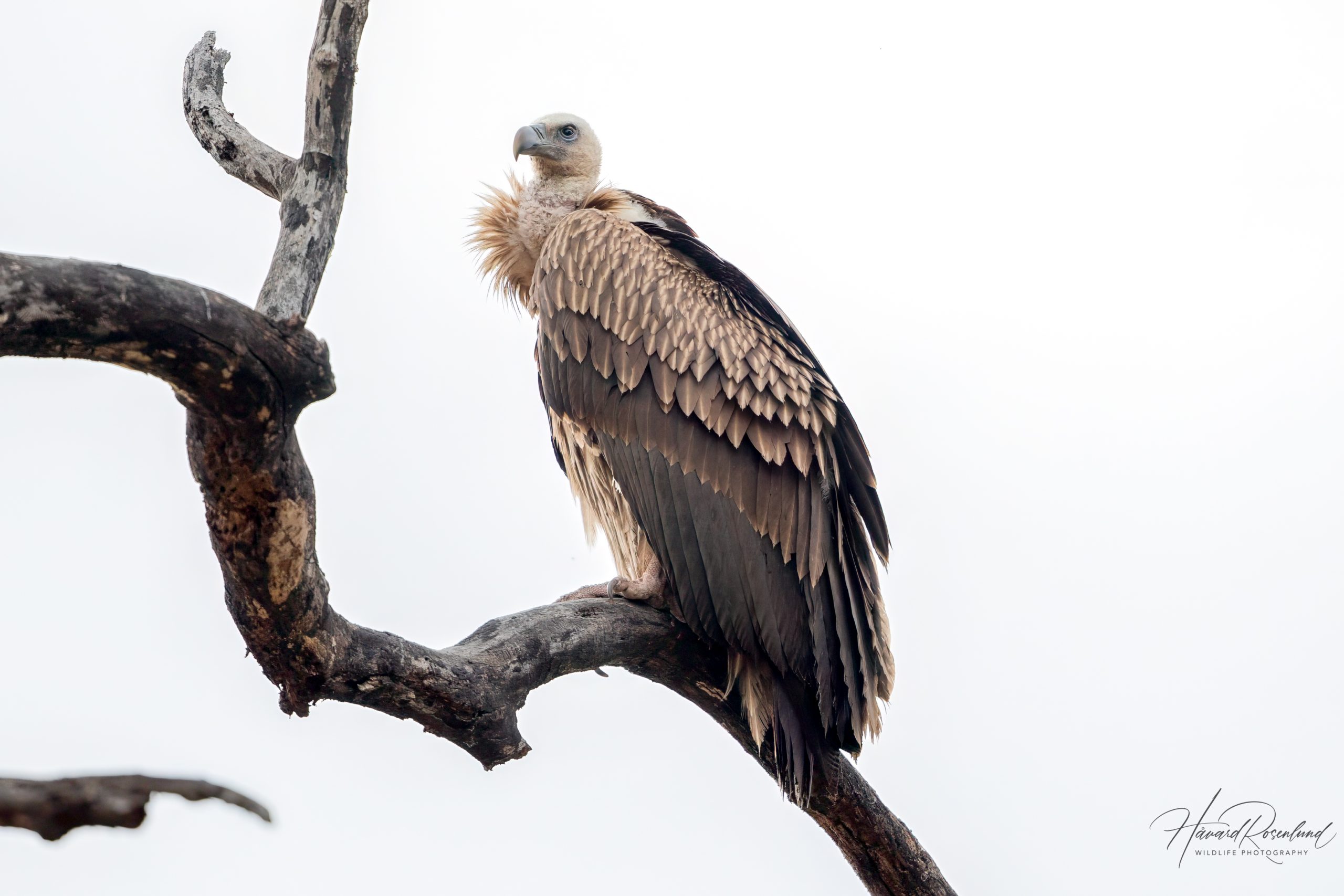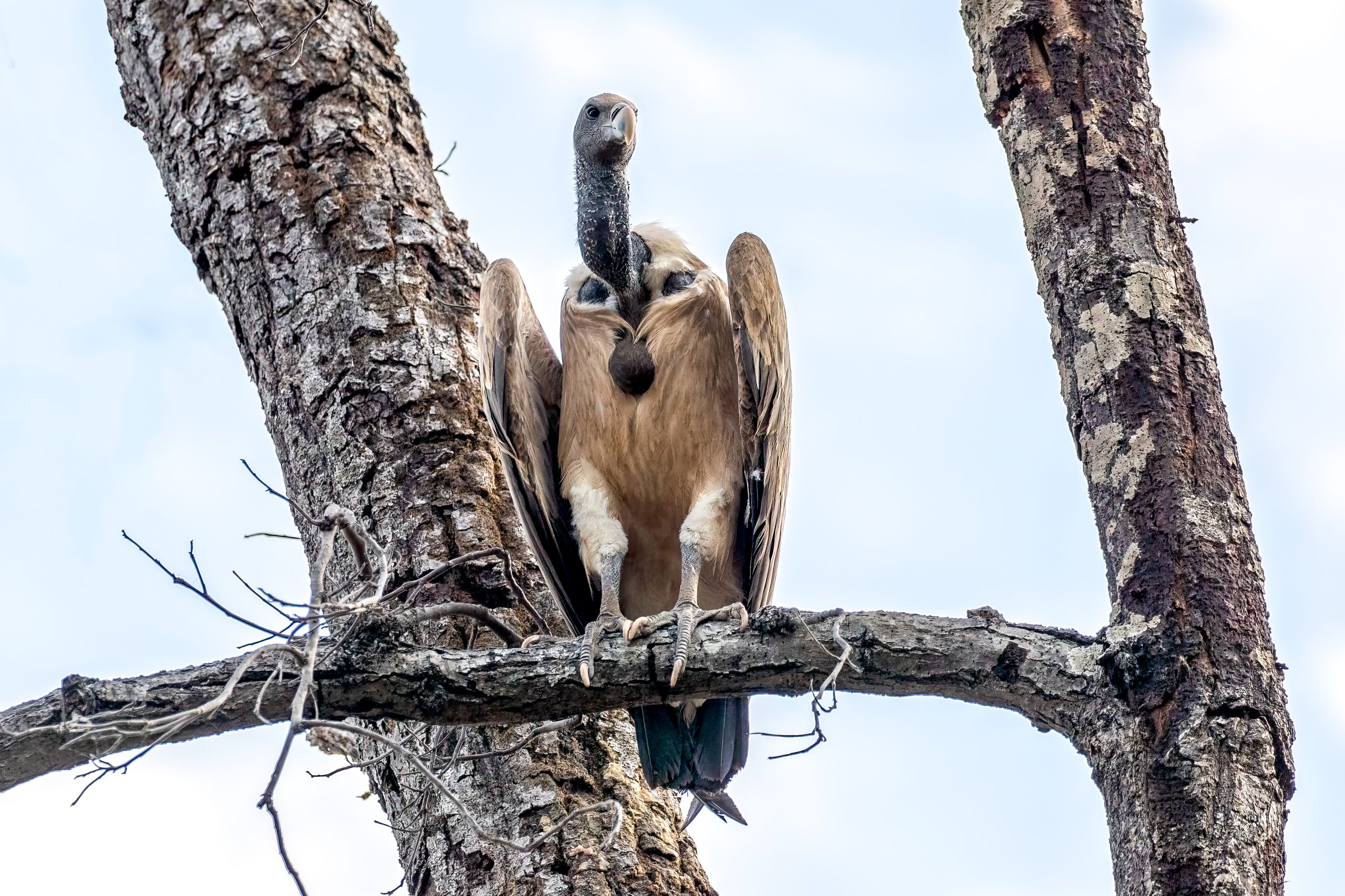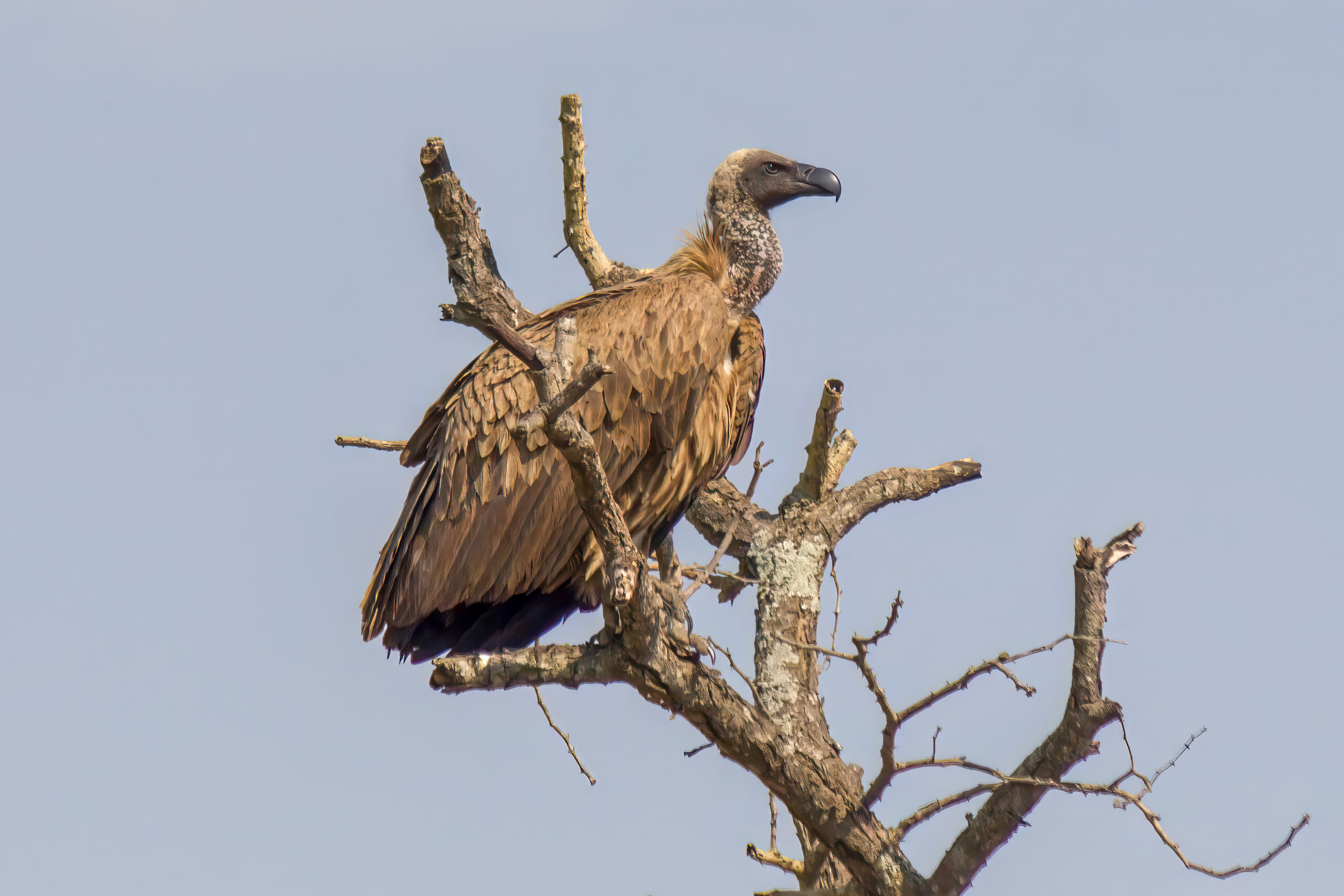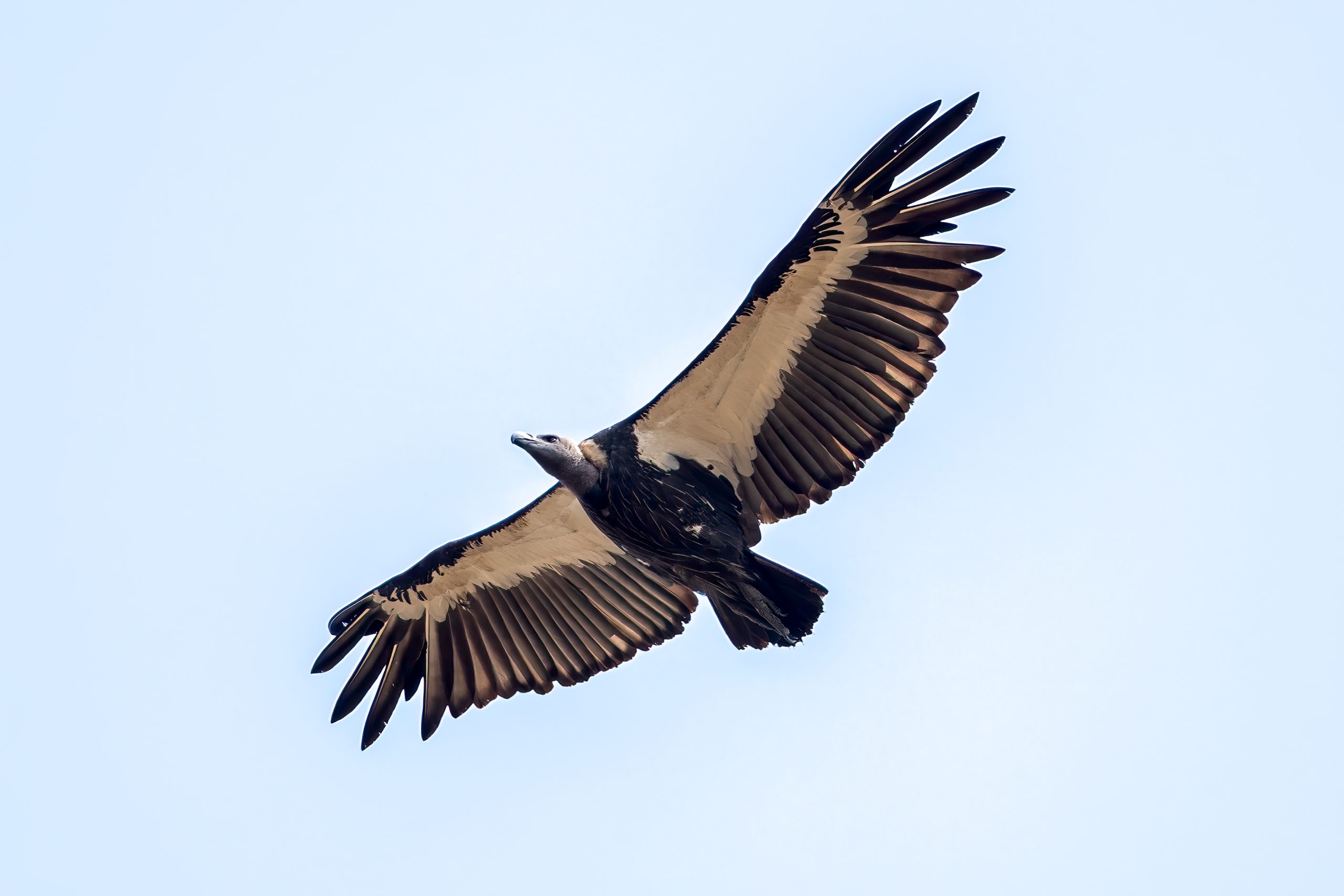Description
The griffon vulture (Gyps fulvus), also known as the Eurasian griffon, is a large bird of prey widely distributed across southern Europe, North Africa, and parts of Asia, from the Iberian Peninsula and the Balkans to the Indian subcontinent. It is known for its impressive wingspan, which can reach up to 2.8 meters (9 ft). It reaches lengths of 105–120 cm (41–47 in) and typically weighs between 6 to 12 kg (13-26 lbs), with females generally being larger than males. The plumage is predominantly pale brown, with a contrasting darker flight feathers and a white or pale head. The head and neck are covered with fluffy down. It is quite similar to the Himalayan vulture (Gyps himalayensis), which is larger and has an overall paler plumage.
Diet & habitat
Griffon vultures are scavengers, primarily feeding on the carcasses of large mammals. They play a crucial ecological role by consuming dead animals, thus preventing the spread of diseases. These birds have a specialized beak designed for tearing through flesh. They often locate food by soaring high in the sky and observing other vultures or carrion-eating animals. The griffon vulture inhabits a range of environments, from mountainous regions to open plains, often nesting on cliff edges and rocky outcrops.
Behavior
Griffon vultures are highly social birds, often seen in large flocks. They have a hierarchical structure, with dominant individuals getting the first access to food. These vultures are known for their impressive soaring abilities, using thermals to glide effortlessly for long distances without flapping their wings. This energy-efficient flight pattern allows them to travel extensive distances in search of food.
Griffon vultures have a remarkable adaptation to low-oxygen environments. These birds can fly at altitudes exceeding 7,000 meters, which is close to the cruising altitude of commercial airplanes. This adaptation allows them to exploit food sources in high mountainous regions that are inaccessible to many other scavengers.
Migration
While griffon vultures are typically sedentary, some populations exhibit migrational behavior, particularly juveniles in the northern parts of their range. During the winter months, these vultures may travel southward to avoid harsh weather and scarcity of food. Many young European birds, for instance, travel to Africa during winter. Their migratory journeys can cover several hundred kilometers, although the exact distances vary depending on regional conditions.
Nesting
Griffon vultures typically breed once a year, with a long breeding season occurring from late autumn to early spring, depending on the region. This prolonged breeding season is likely an adaptation to the unpredictability of available carcasses. They build large nests made of sticks, often reused and added to each year, located on cliff ledges or in caves. The female lays a single egg, which both parents incubate for about 50 to 60 days. After hatching, the chick is cared for by both parents and fledges at around 3 to 4 months of age. They are immature from one to four years of age.
Status
The griffon vulture is currently listed as least concern by the IUCN Red List, but certain populations are under threat due to habitat loss, poisoning, and collisions with power lines, particularly in parts of North Africa and Asia. Conservation efforts include the establishment of feeding stations, known as vulture restaurants, and legal protections against poisoning and habitat destruction. Due to conservation programs in Europe, this species seems to be increasing in numbers overall.







